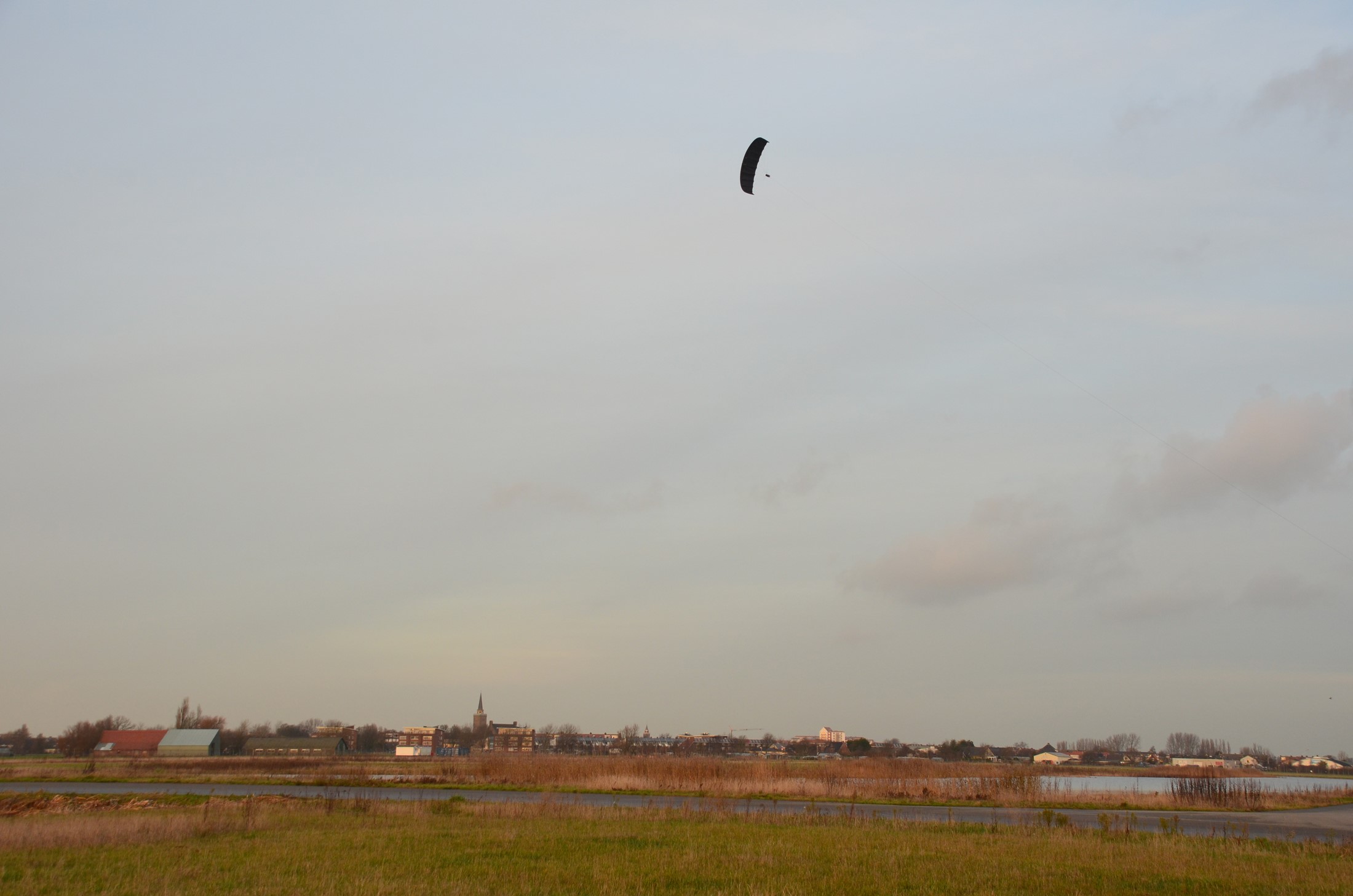Kitepower had planned an endurance test for last week. But very variable winds put paid to the plans for continuous power production. Trials will continue into next year.
During the endurance test. (Photo: Kitepower)
The Delft startup Kitepower produces wind energy by flying a large kite attached to a winch and a generator. The challenge is to keep it up and running in variable winds.
‘The goal for next week (9-13 December) is five days of continuous, uninterrupted operation!’, wrote kite power researcher Dr Roland Schmehl. He explained: “The kite flies at an unprecedented system size: 60 m2 kite, 1 centimetre diameter, Dyneema tether and several tons of pulling force because the wind next week will be STRONG!”
As often happens, reality turned out to be harsher than expected.
A week later, Johannes Peschel, director of the Kitepower company, confirms that the wind was strong on Monday. The system produced 250 kilowatts of power and the power electronics worked just fine. Nonetheless, the team decided to take the kite down before nightfall.
Then the wind was gone
Then the wind was gone. No kiting on Tuesday. Only on Wednesday could the team venture another relaunch in the lowest wind ever (2.5 m/s). The kite flew until the evening.
On Thursday, the team discovered a minor glitch in the kite and decided to terminate the test. According to Peschel, the tests will continue this week and all through the first half of 2020.
It was the first time that the Kitepower winch was connected to a Greener battery system. The storage system stores the intermittent power from the kite, which only delivers power when reeling out, and delivers continuous power. Peschel expects a continuous 100 kW output from Kitepower plus battery. But not in last week’s weather.
Do you have a question or comment about this article?
j.w.wassink@tudelft.nl


Comments are closed.